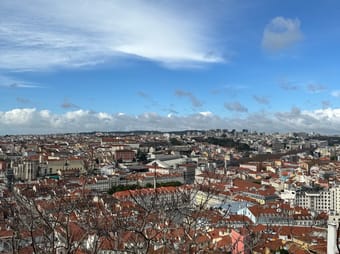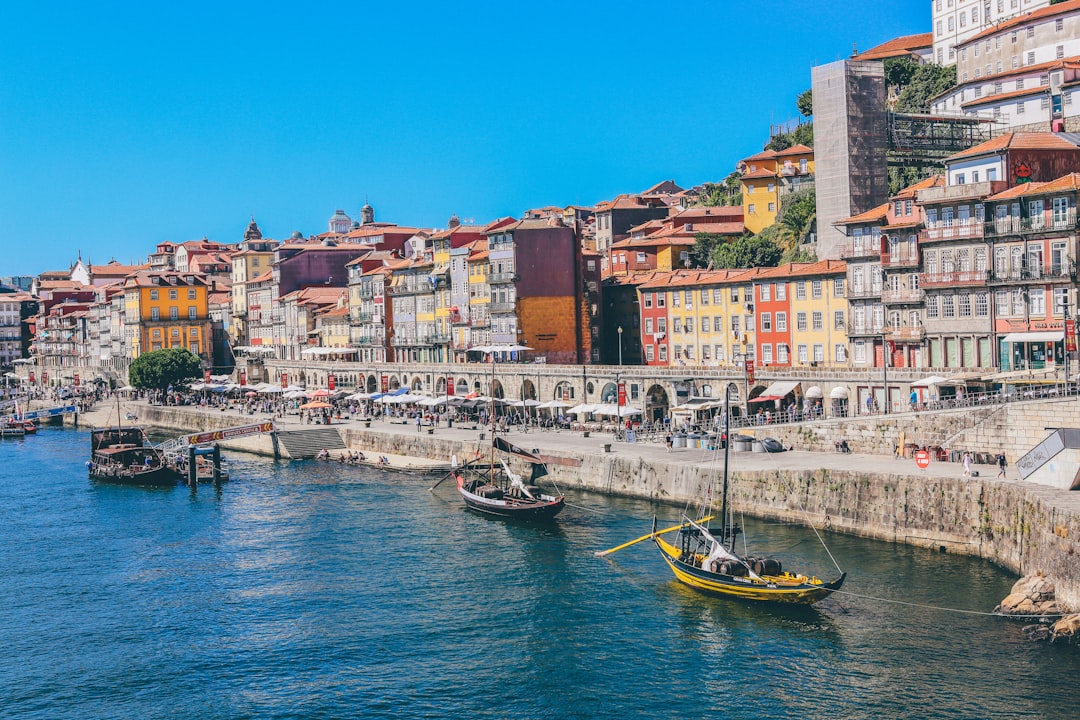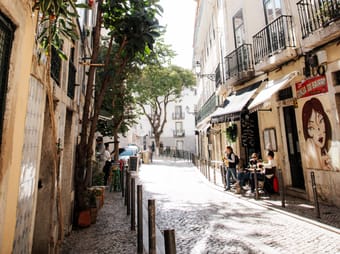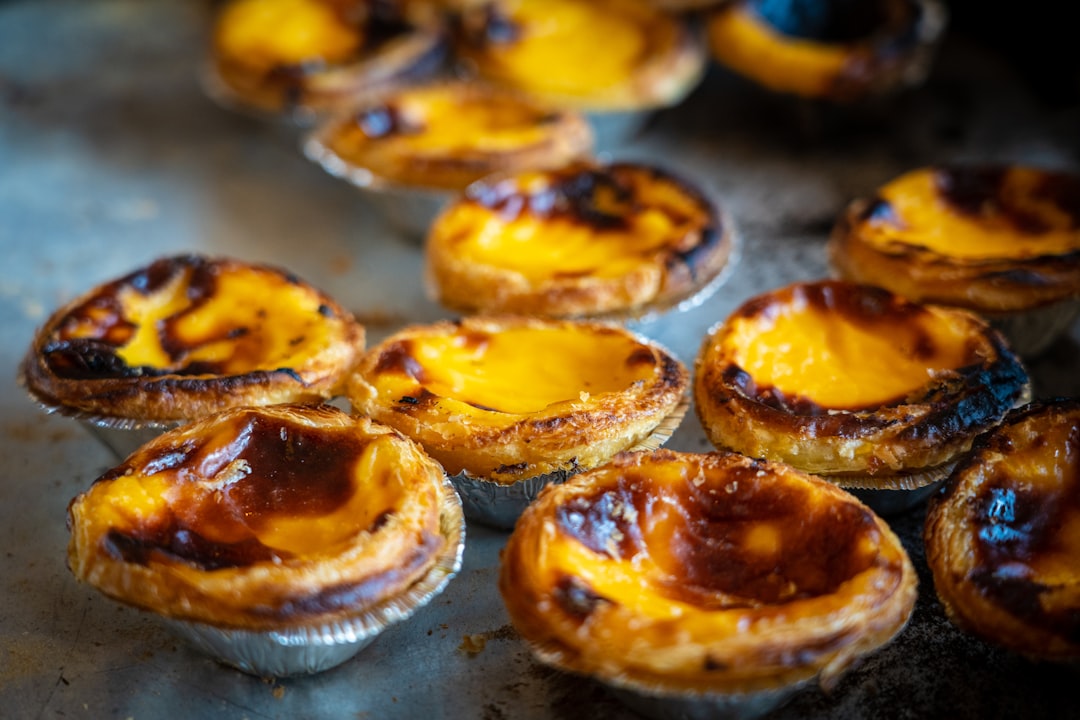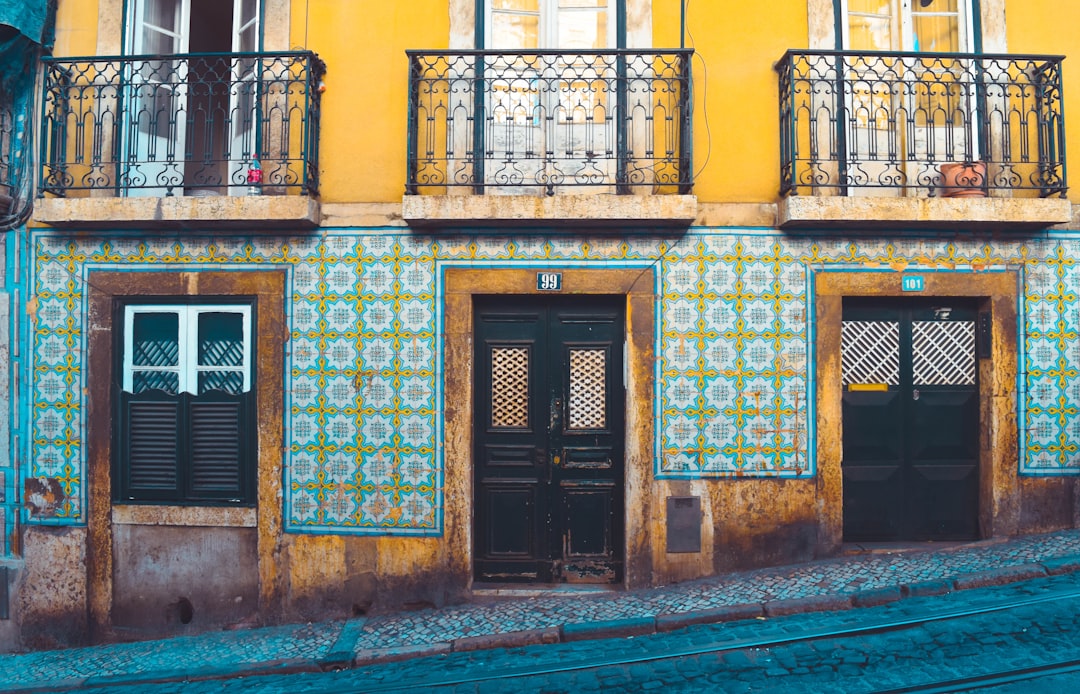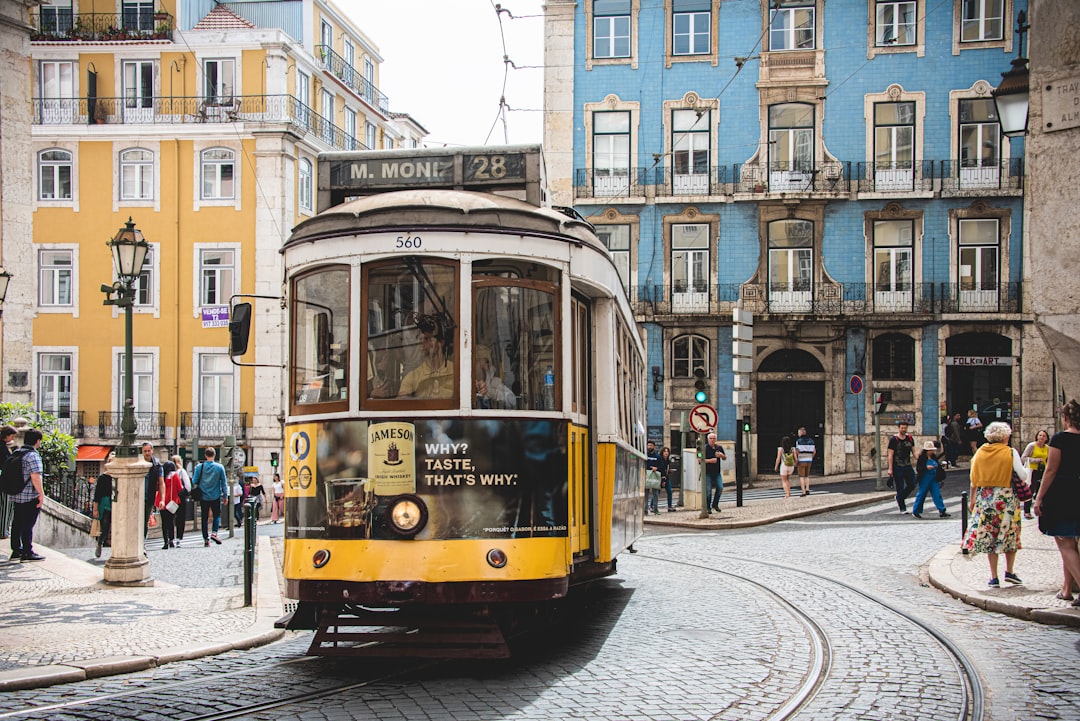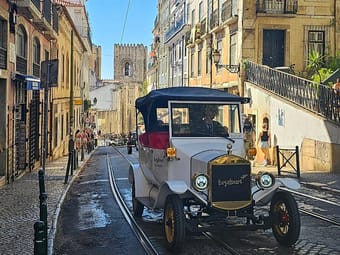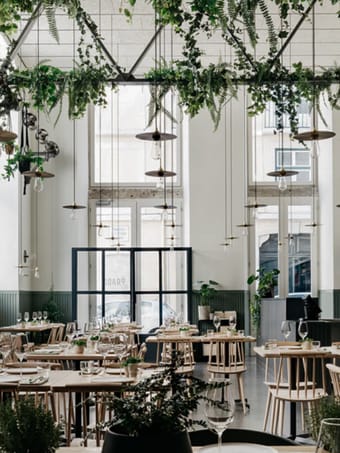Results for Belém, Portugal
Embark on a three-day odyssey through Lisbon's enchanting blend of history and modernity. Day one unfolds in Alfama, revealing Lisbon Cathedral and Carmo Convent, complemented by local dining gems. Day two ventures through LX Factory, Belem, and Pink Street, highlighting iconic landmarks and culinary delights. Day three transports you to the UNESCO town of Sintra, exploring Pena Palace and hidden gems like Tascantiga. Handpicked Viator tours enhance the experience, ensuring a rich immersion into Lisbon's cultural tapestry, with an array of gastronomic delights woven throughout.
Wear comfortable shoes, as Lisbon's streets are cobblestone and hilly. Bring a water bottle to stay hydrated during your exploration. Allow flexibility in your schedule to linger in places that capture your interest.
Couples • Family • Groups • Architecture • Art • Boutique • Budget • Coffee • Foodie • History • Relaxation • People & Culture • Romantic • Shopping • Slow Travel
$5.00
0
Lisbon, the capital city of Portugal, is a captivating destination that seamlessly blends rich history, vibrant culture, and lively nightlife.
Traveling to Lisbon is a journey into a city that has preserved its historic charm while embracing modernity - you will see and feel it!
Lisbon presents an array of activities that cater to every traveler's preferences. This guide offers curated recommendations for "must-see" and "do" experiences when exploring the city, ranging from renowned tourist attractions to authentic local experiences ;)
- Embark on a Historical Journey
- Immerse Yourself in Cultural Treasures
- Treat your taste buds to the delights of Portuguese cuisine
- Explore Lisbon's Green Spaces
- Capture Instagram-Worthy Moments at the "miradouros"
- Live Lisbon to the fullest by experiencing its vibrant nightlife
- Go where locals go
This guide ensures a well-rounded exploration of Lisbon, blending historical sites with the cultural richness, culinary delights, and lively energy that make this city a truly unforgettable destination.
Trust me. You'll have a Great Journey!
Female Solo • Groups • Backpacker • History • People & Culture • Outdoors
$5.99
1
Lisbon is the capital of Portugal, a city full of history and which has an unique beauty.It is the perfect destionation to be visitied anytime of the year.
I prepared a 4 days itinerary that will make you fall in love with Lisbon and more.
This is a recommendation and can be adjusted to suit each of you.
Architecture • History • Outdoors • People & Culture • Relaxation
$15.00
0
Complete guide with attractions and venues where to eat/drink, get those very special souvenirs from (bespoke & local brands and markets) and catch a beautiful sight…or just your breath after walking up and down the hills of this marvellous city. Lisbon is all about art, colors, architecture and GOOD vibes! 🇵🇹💚
💡General tip: combine Lisbon with visits/stays in Sintra and Porto.
Highlights:
🚋 Trams - The Lisbon tramway network is a system of trams in operation since 1873; it presently comprises six lines and has a length of 31 km with 63 trams in operation (45 historic "Remodelados", 8 historic "Ligeiros" and 10 modern articulated trams). Tram 28 is famous because happens to go past many of the city's most significant landmarks in districts like Alfama, Baixa and Estrela. Because the route also uses some heritage-style tram carriages, it has become a popular tourist attraction in the city.
💠 Azulejos - is a form of Spanish and Portuguese painted tin-glazed ceramic tilework. Azulejos happen to be one of the most distinctive art forms in Portugal and are found on the interior and exterior of churches, palaces, ordinary houses, schools, and nowadays, restaurants, bars and even railways or subway stations.
🧼 Soaps - Oprah Winfrey said they're one of her favorite things, so the world is now also a fan of Portuguese soaps. But they're not recent products. They've been made since the 1800s and are 100% natural. They've maintained beautiful Art Deco and Art Nouveau packagings from the 1920s, and have become one of the favorite gifts to take from Portugal.
🥮 Pastel de nata - is a Portuguese egg custard tart pastry, optionally dusted with cinnamon - looks like a cross between a custard tart and a cake; created by monks in the Jerónimos Monastery, a major tourist attraction today and a UNESCO World Heritage Site.
🍲You also have to try these traditional dishes: Bifana, Sardines, Caracoletas & Prego na Pao, Alheira de Mirandela, Queijadas.
🧉Ginja - also known as ginjinha. This sour cherry liqueur is a tourist favorite but has sweetened locals’ palates for a long time too. There are establishments in Lisbon entirely dedicated to selling this sweet beverage made with Morello cherries, a variety of spices, and plenty of sugar. Nowadays, ginja is also served in edible chocolate cups. While you may choose among white chocolate, milk chocolate and dark chocolate, dark chocolate does indeed pair beautifully with the super sweet, almost syrupy drink.
Shopping
$5.00
18
This guide to Lisbon is the result of my experience as a solo traveler in the city and it's surroundings, as well as dozens of hours of planning and research. It is designed to be all you will need to plan your trip to this region of Portugal and save you hours and hours of planning and stress.
I have included numerous activities and places to visit within the city ranging from historical and architectural sites, museums, scenic viewpoints, as well as beaches and day trips from Lisbon. I have also included 15+ accomodation and eating out options at different price ranges.
Most importantly, I have included information on travel safety, visas, entry requirements, local currency and how to get around. This way, you don't have to be too bothered by logistics and the more boring aspects of travel planning. I've got you covered!
This guide is divided into sections so you can read the entire guide or go to the sections that interest you the most.
It also includes an interactive map and it's mobile friendly so you can access all the info on your phone once you download the thatch app. And most importantly, this is a living guide, so I will update this at no extra cost for you!
Happy travels!
Architecture • Art • Beach • Relaxation • People & Culture • History
Free
95
If you went to Portugal, and didn't have a pastel de nata...did you even go to Portugal? Here are some of the best of the best when it comes to trying the national sweet of Portugal in Lisbon.
50+ • Backpacker • Car-free • Couples • Digital Nomads • Family • Groups • LGBTQ+ • Female Solo • Coffee • Foodie
Free
3
Portugal's sun-kissed capital is a city of steep cobblestone streets, iconic yellow trams, and breathtaking viewpoints that never fail to impress.
Lisbon's charm is matched only by the warmth of its people. Locals welcome visitors with open arms and stories to share, making everyone feel like a long-lost friend.
Backpacker • Couples • Digital Nomads • Family • Groups • Female Solo
$6.00
0
1. Jeronimos Monastery
Cost: €12 for adults, free for children under 12, €6 for seniors (65+), and €6 for students; or free with the Lisboa Card.
Highlights:
Jeronimos Monastery, also known as Mosteiro dos Jerónimos, is a stunning example of Manueline architecture, a Portuguese style that combines Gothic and Renaissance elements with maritime motifs. Commissioned by King Manuel I in the early 16th century, the monastery was built to commemorate Vasco da Gama's successful voyage to India and to give thanks to the Virgin Mary for his safe return.
The monastery's architecture is simply spectacular. The intricate stone carvings adorning the façade showcase the wealth and artistry of Portugal's Age of Discovery. Detailed motifs, such as twisted ropes, sea creatures, and botanical elements, reflect the country's seafaring history and the natural world. And inside, visitors can marvel at the beautiful cloisters, considered some of the most magnificent in the world.
Tips:
- With so much to see, make sure to plan to spend at least a couple of hours exploring the monastery and its grounds.
- After your visit, take some time to check out from Pastéis de Belém, which has been serving their famous custard tarts since 1837. It's just a short walk from the monastery and is a must-try treat while in Lisbon.
Best Time to Go: The lines can get very long, so make sure to get there right when they open at 9:30 am.
2. Miradouro de Santa Luzia
Cost: Free
Highlights: This miradouro (viewpoint) offers one of the best views in Lisbon, as it provides a panoramic look at the Alfama district and the Tagus River. The tiled mosaics and beautiful gardens add to its charm, making it the perfect spot to catch a sunset.
Best Time to Go: We recommend going at sunset. The views at sunset are especially breathtaking at that time and the lighting is perfect for photos.
3. Carmo Convent
Cost: €7 for adults, €5 for children, students, & seniors.
Highlights: The Carmo Convent, a stunning example of Gothic architecture, stands as a significant reminder of Lisbon's past. Partially destroyed by the devastating earthquake of 1755, the convent's roofless nave creates a beautiful open-air space. Today, it houses the Carmo Archaeological Museum, where visitors can explore a fascinating collection of artifacts, including prehistoric relics, medieval tombs, and ancient sculptures.
Best Time to Go: The Carmo Convent tends to get crowded in the afternoon, so we recommend getting there when it opens at 10 am.
4. Praça do Comércio
Cost: Free
Highlights: One of the largest squares in Europe, Praça do Comércio is bordered by impressive yellow buildings and the Tagus River. It's a vibrant hub of activity with restaurants, cafes, and the iconic Rua Augusta Arch.
Best Times to Go: We recommend going in the early evening to catch the sunset. The square is also beautifully lit at night, perfect for a leisurely stroll after dinner.
5. Lisbon Cathedral
Cost: €5 for adults, €3 for children
Highlights: The oldest church in Lisbon, the Lisbon Cathedral features a mix of Romanesque, Gothic, and Baroque architectural styles. Highlights include the impressive rose window, the Gothic cloister, and the treasury with its collection of sacred art.
Best Time to Go: To avoid the crowds, we recommend going in the early morning or late afternoon.
Backpacker • Digital Nomads • Female Solo • Couples • Architecture • Photography • Slow Travel • Budget
Free
0
Built up from my own trip to Lisbon in February, plus a few extra places I didn’t get to but have saved for next time!
This little guide includes:
🤓Just a little history I found helpful
🍤a few dishes to try
🛎️1 hotel
🍽️5 spots to dine
☕️5 spots to grab a coffee & sweet
🥂2 spots for just a drink
🚡 7 spots to explore!
Plus since we braved the city with a stroller, I left some details in the locations 😉
What’s not included: anything to do with Fado… sorry 😅
Leaving this guide free for now, but if you find it helpful and would like to say thanks, tips are always appreciated 🥰
(you can help fund research for my next guide 🤓)
Foodie • History • People & Culture
Free
14
Explore the vibrant streets, historic sites, and delicious food of Lisbon with this budget-friendly guide 🇵🇹 I share helpful tidbits about neighborhoods, accommodations, restaurants and foods to look for, and things to do.
Digital Nomads • Female Solo • Backpacker • Couples • Budget • Boutique • Foodie • History • People & Culture • Architecture
Free
5
Lisbon is one of those cities that I know we’ll keep going back to throughout our lives. This beautiful city has so much to offer. The hills are a huge part of the charm, the views from so many different locations are breathtaking. The tile buildings here are beautiful and so unique. The trolleys and funiculars add to the experience and make traversing the city so much fun. The food is excellent, there are so many options, and so much to see. It is easy to understand why Lisbon is a popular place of residence for expats from all over the world, we could actually see ourselves living in Lisbon some day, too.
I have been to Lisbon multiple times so I have a lot of recommendations here! Hopefully you can pick and choose what suits you best on your stay in Lisbon! The things I've listed should give you more than enough to do for a few days.
This guide will include everything I've personally done in Lisbon with honest details about each location.
I will also list some wish-list spots in a section at the end that includes things that I still haven't done yet in Lisbon that I have planned and researched and hope to do on a future visit.
Adventure • Foodie • Wine • Relaxation • People & Culture
$5.00
4
Planning a trip to Lisbon but don't know where to start?
This FREE 4-day city guide will help you navigate your way around the capital to ensure you get the most out of your getaway, whether you are going for 2 days or 4 days!
This guide includes:
👉 What there is to see and do
👉 Restaurant and bar recommendations (tried and tested)
👉 Recommendations on where to stay
I can also offer a full itinerary which provides a recommended schedule for you with more recommendations and tips, transport options, local information, restaurant bookings and more, leaving you with nothing to worry about other than enjoying this iconic and beautiful European city.
Backpacker • Couples • Female Solo • Groups • Adventure • Wine • Shopping • Road Trip • Photography • People & Culture • Outdoors • Foodie • Budget • Architecture • Art • Design
Free
3
Discover my collection of tightly edited places to eat, stay, and play in Lisbon. We've tapped into our network of travel connoisseurs, conducted extensive research, and scoured all that's local, ungoogleable, and off-the-trodden path.
The city guide spotlights design-led sustainable hotels, artisanal cafes, cutting-edge art spaces, farm-to-fork restaurants, beach excursions, sailing tours, and elusive, off-the-grid experiences that breathe life into a city.
The city guide includes a link to a curated map with all the recommended places to eat, play, and stay. So, what's in the guide?
Here's a glimpse:
- 15 handpicked conscious boutique hotels in Lisbon
- 4 recommended rentals in Lisbon
- 10 favorite spots for coffee & nibbles
- 10 favorite lunch spots
- 18 favorite dinner spots
- 12 cool bars + night clubs
- 9 suggested places to explore in Lisbon
- 4 must-see sites
- 9 great spots for art and design lovers
- 10 off-the-beaten-path experiences in and around Lisbon
- A handful of cool shops we love
Architecture • Art • Boutique • Design • Luxury • Photography • Slow Travel • Sustainable/Eco
$12.00
1
Ask ThatchGPT




